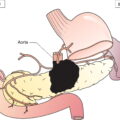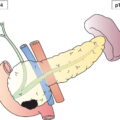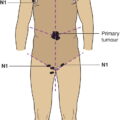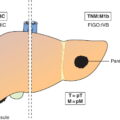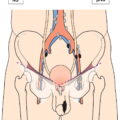The classification applies to carcinomas of the urethra (ICD‐O‐3 C68.0) and transitional cell carcinomas of the prostate (ICD‐O‐3 C61.9) and prostatic urethra. There should be histological or cytological confirmation of the disease. The regional lymph nodes are the inguinal and the pelvic nodes. Laterality does not affect the N classification. The pT, pN, and pM categories correspond to the T, N, and M categories. Note pM0 and pMX are not valid categories.
URETHRA
Rules for Classification
Regional Lymph Nodes (Fig. 490)
TNM Clinical Classification
T – Primary Tumour
TX
Primary tumour cannot be assessed
T0
No evidence of primary tumour
Urethra (Male and Female)
Ta
Noninvasive papillary, polypoid, or verrucous carcinoma (Figs. 530, 531)
Tis
Carcinoma in situ
T1
Tumour invades subepithelial connective tissue (Figs. 530, 532)
T2
Tumour invades any of the following: corpus spongiosum, prostate, periurethral muscle (Figs. 530, 533, 534)
T3
Tumour invades any of the following: corpus cavernosum, beyond prostatic capsule, bladder neck (extraprostatic extension) (Figs. 535, 536, 537)
T4
Tumour invades other adjacent organs (invasion of the bladder) (Fig. 538) 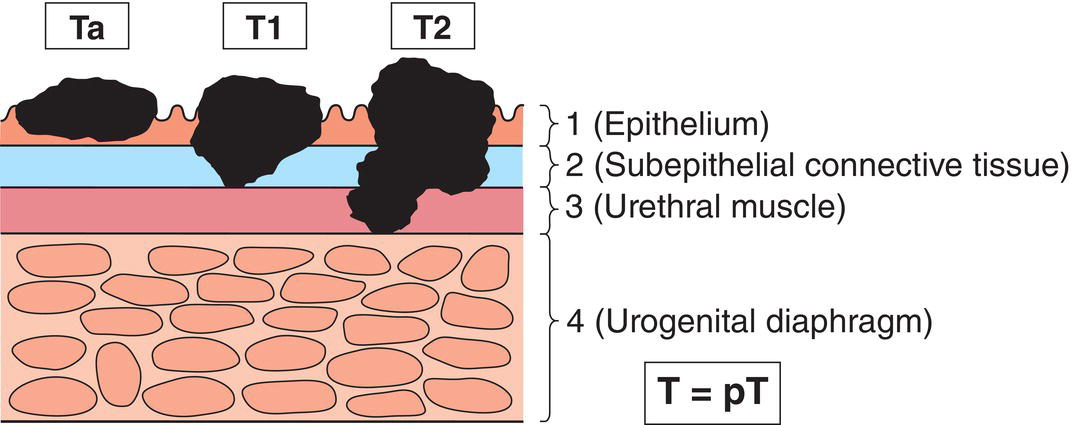
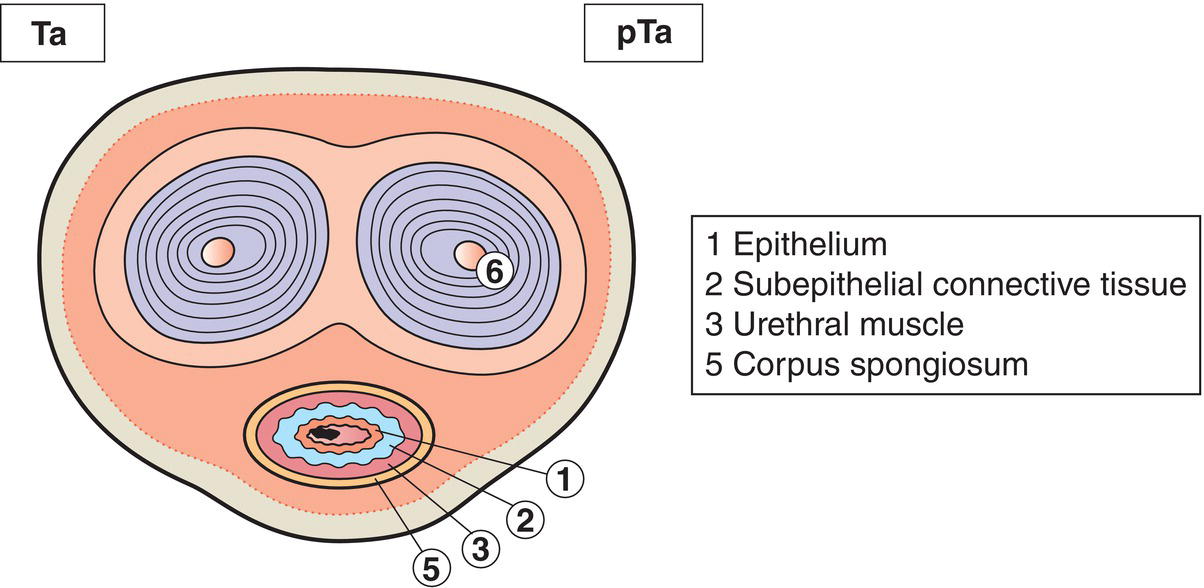
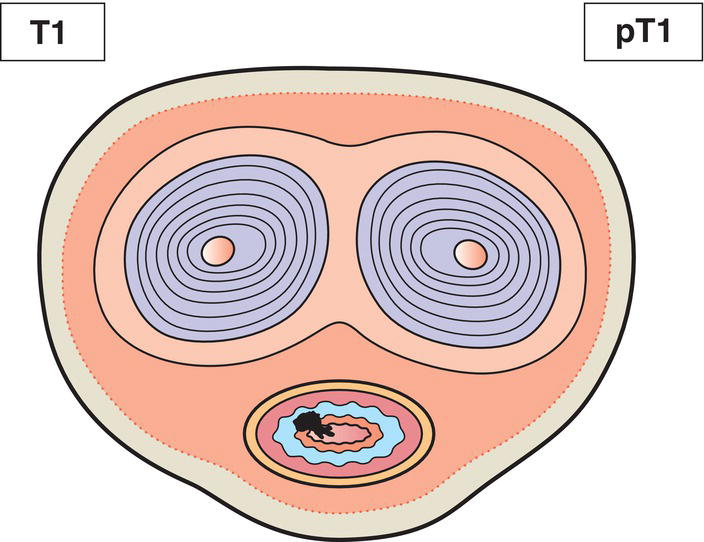
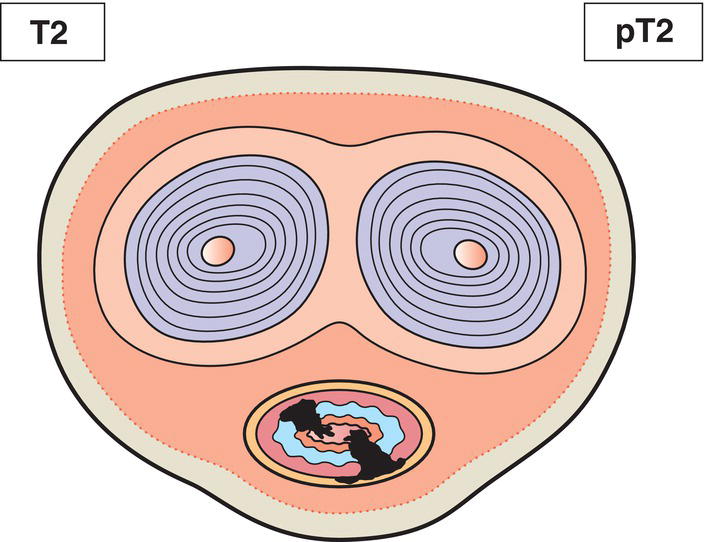


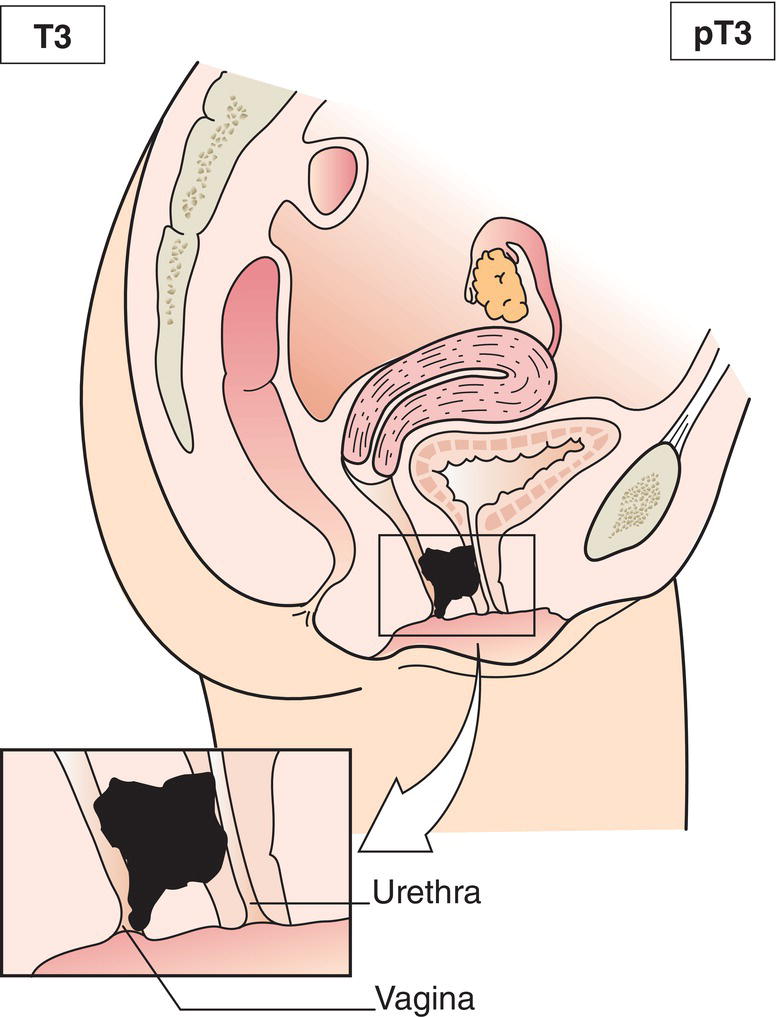
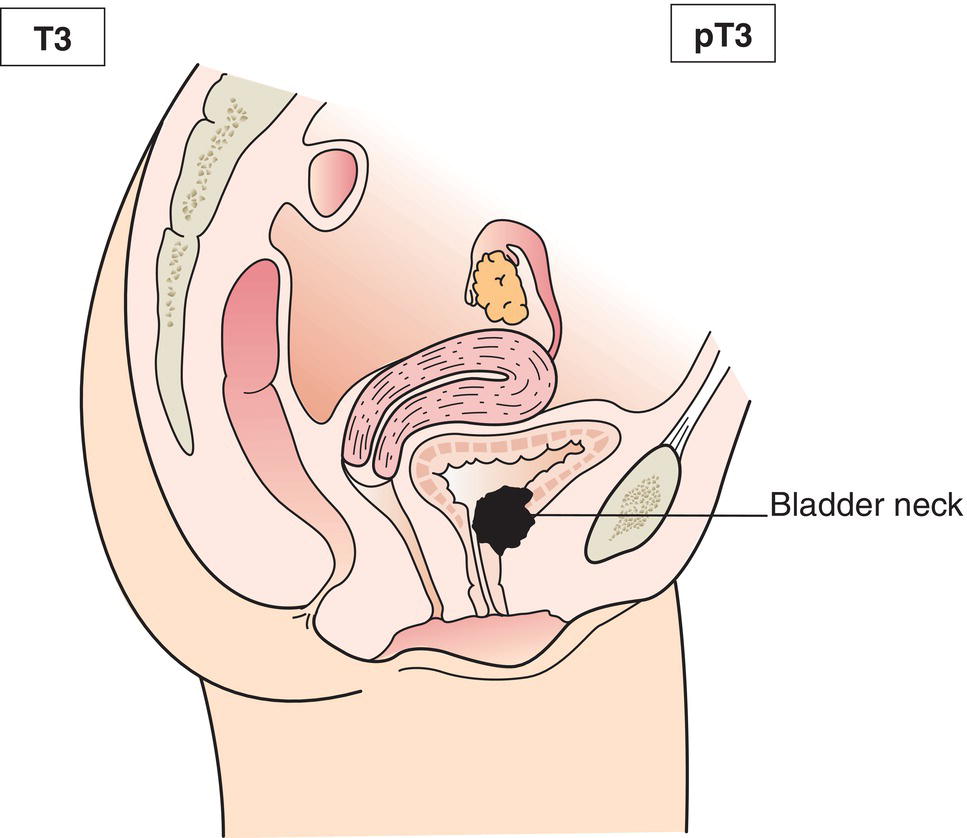
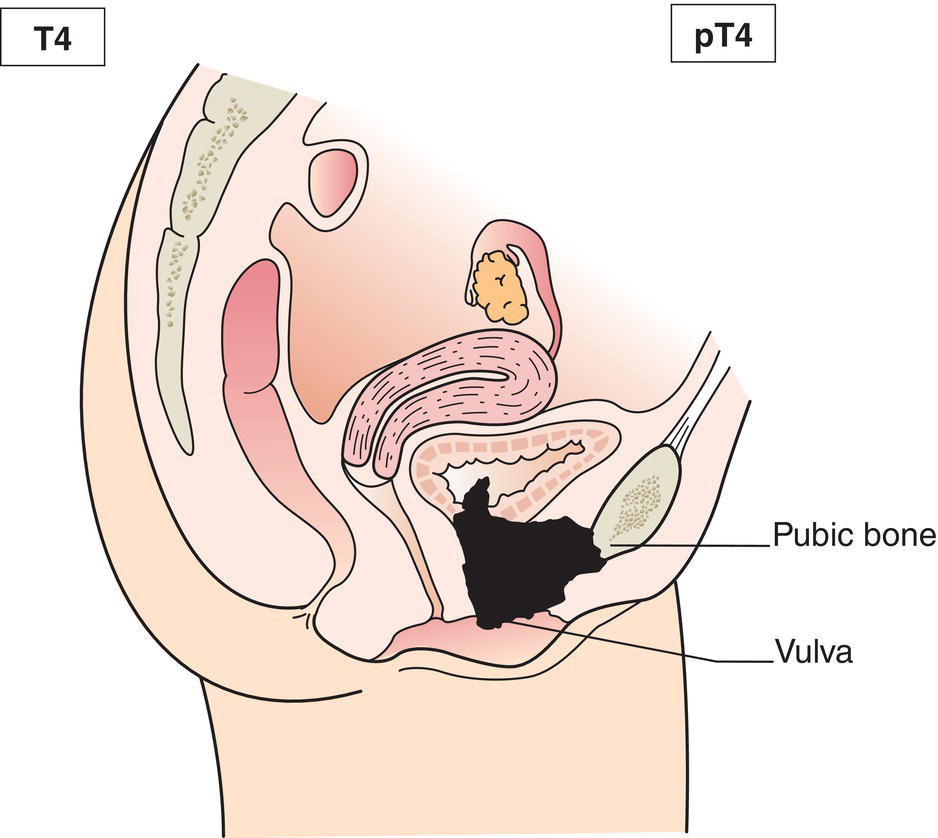
Prostatic urethra
Tis
Carcinoma in situ, involving prostatic urethra, periurethral or prostatic ducts without stromal invasion (Figs. 539, 540)
T1
Tumour invades subepithelial connective tissue (for tumours involving prostatic urethra only) (Figs. 540, 541)
T2
Tumour invades any of the following: prostatic stroma, corpus spongiosum, periurethral muscle (Figs. 540, 541)
T3
Tumour invades any of the following: corpus cavernosum, beyond prostatic capsule, bladder neck (extraprostatic extension) (Fig. 542)
T4
Tumour invades other adjacent organs (invasion of bladder) (Fig. 543) 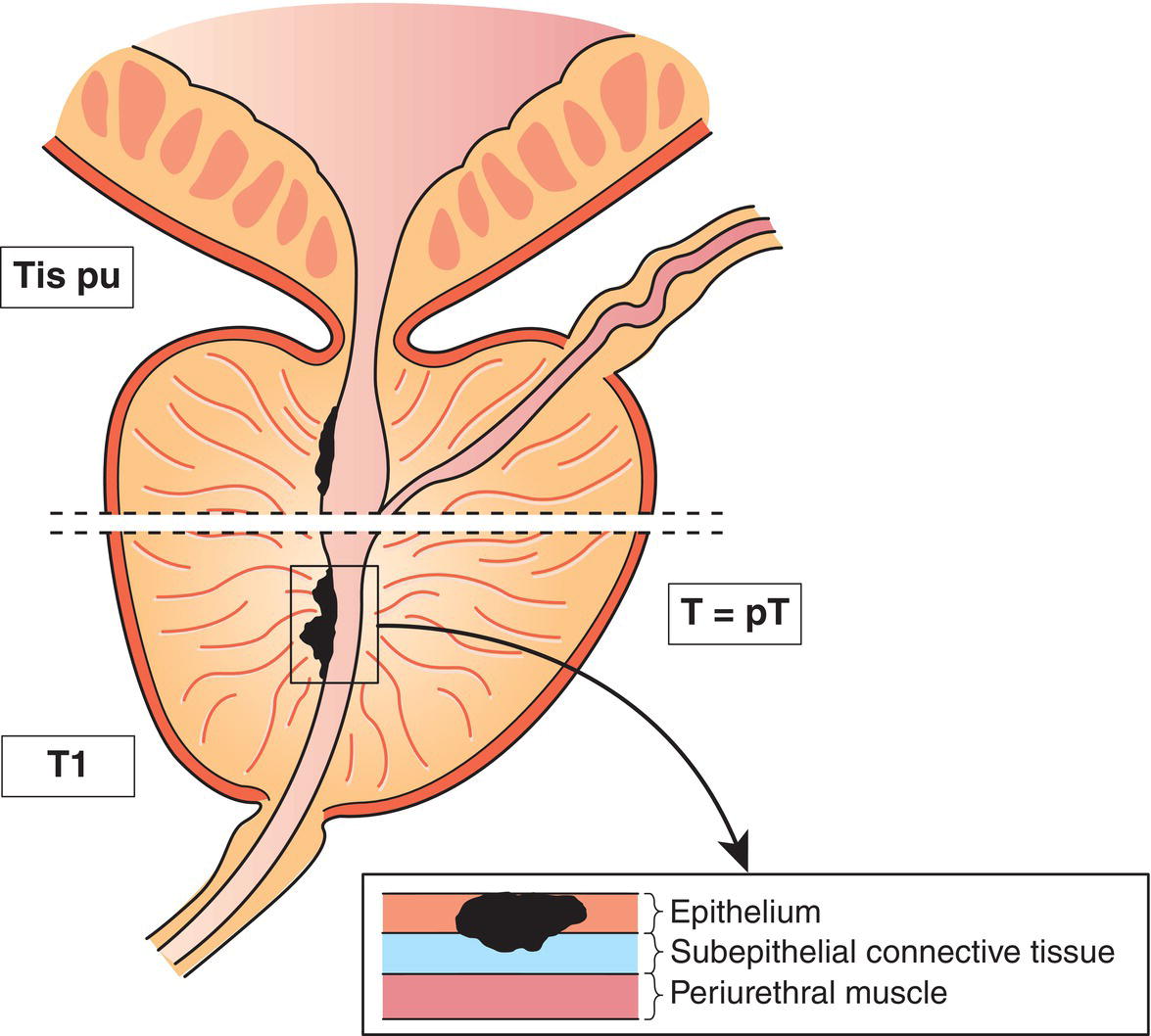
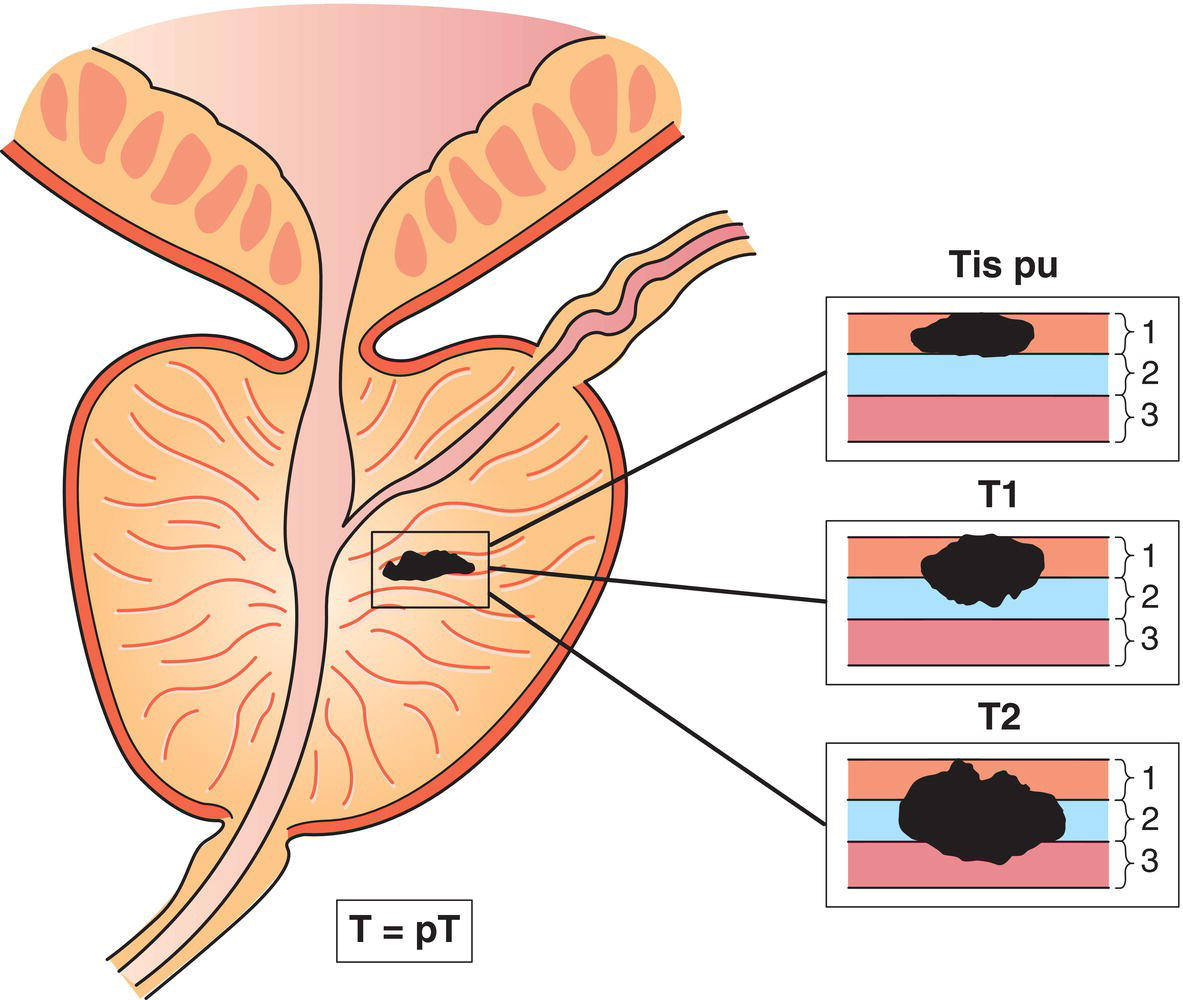
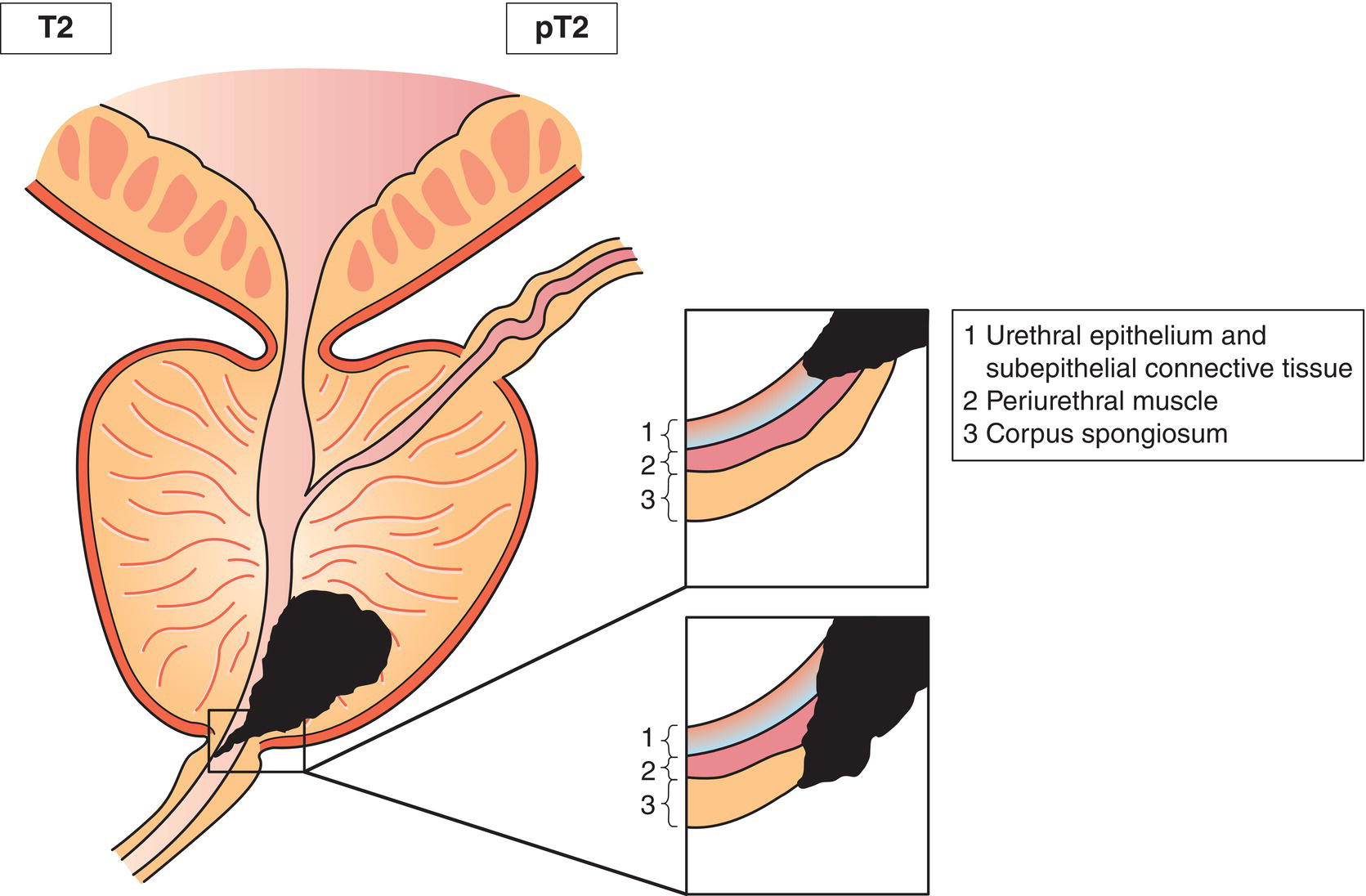
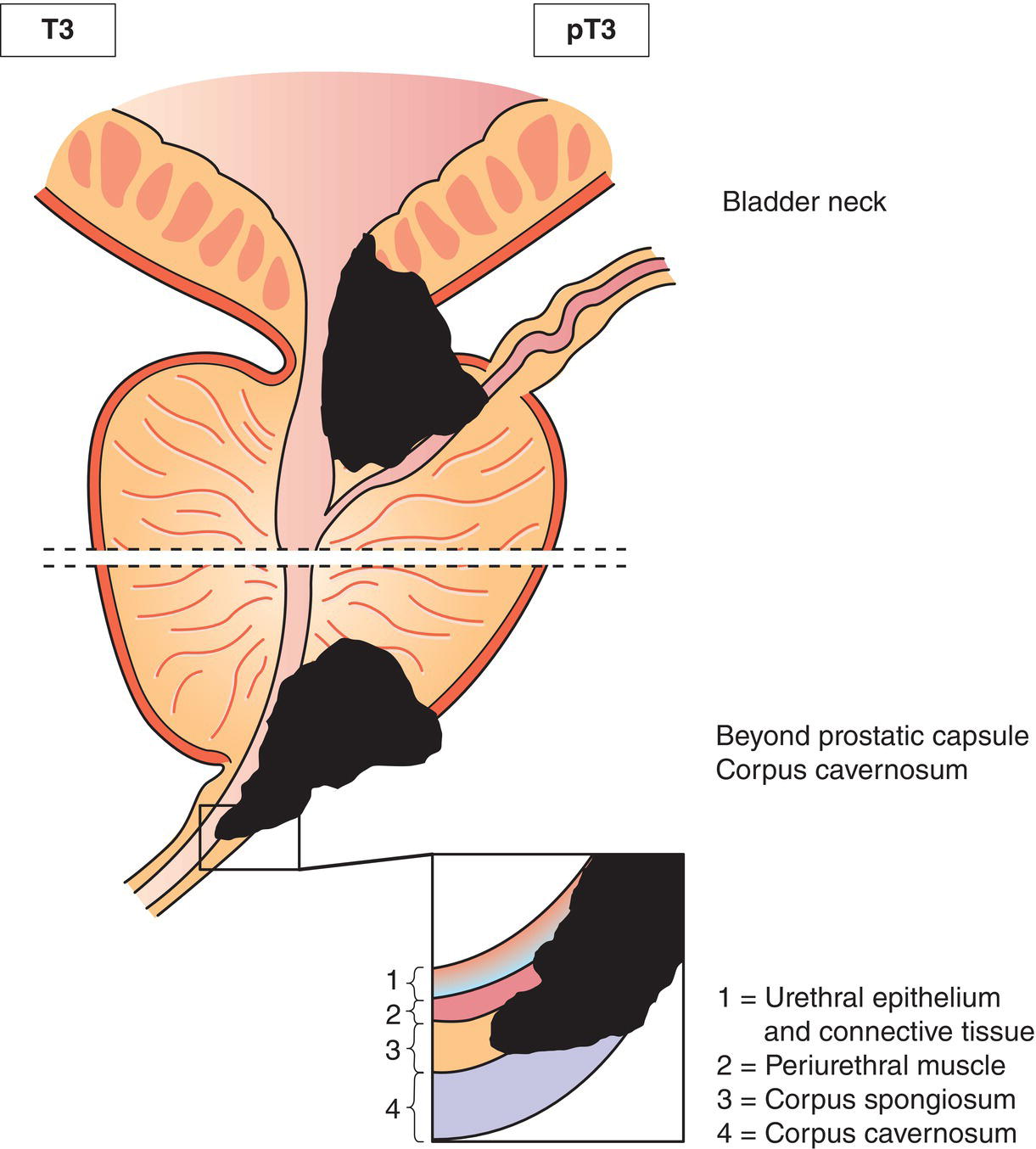
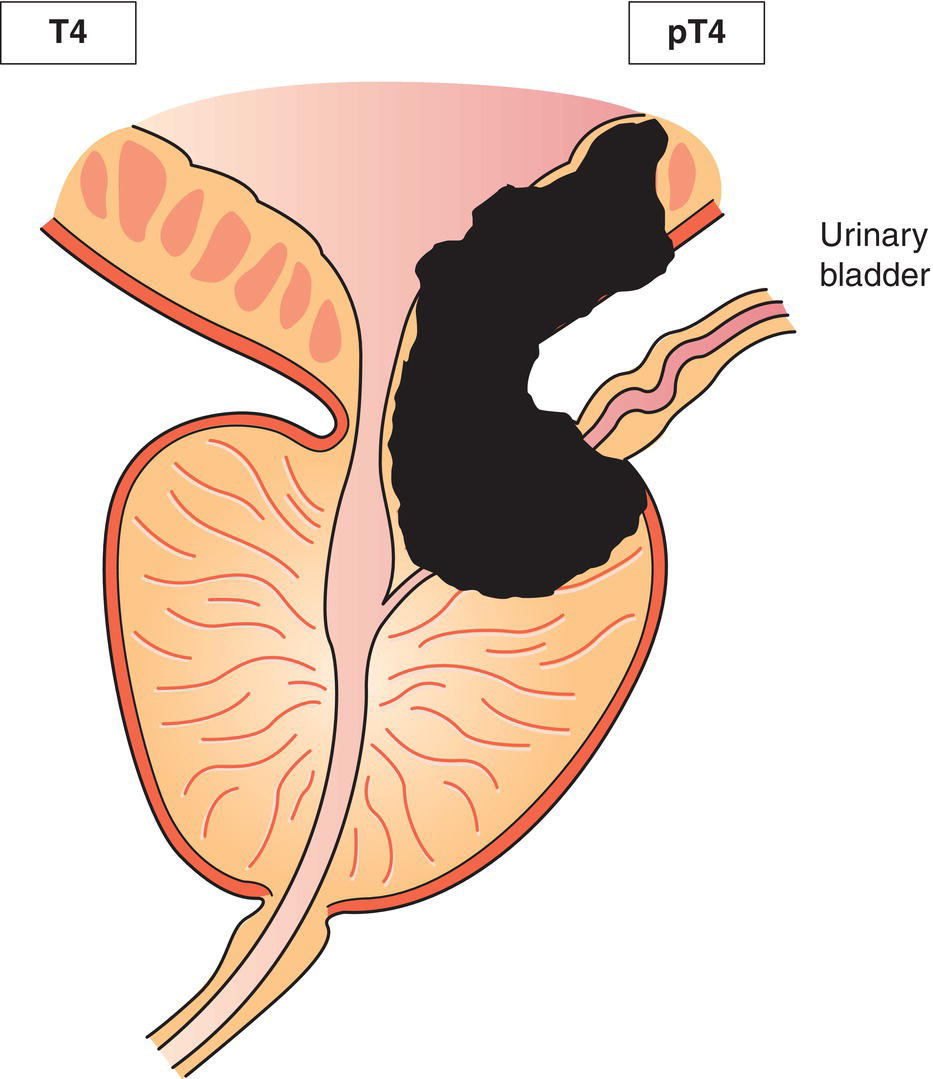
N – Regional Lymph Nodes
NX
Regional lymph nodes cannot be assessed
N0
No regional lymph node metastasis
N1
Metastasis in a single lymph node (Fig. 544)
N2
Metastasis in multiple lymph nodes (Fig. 545) 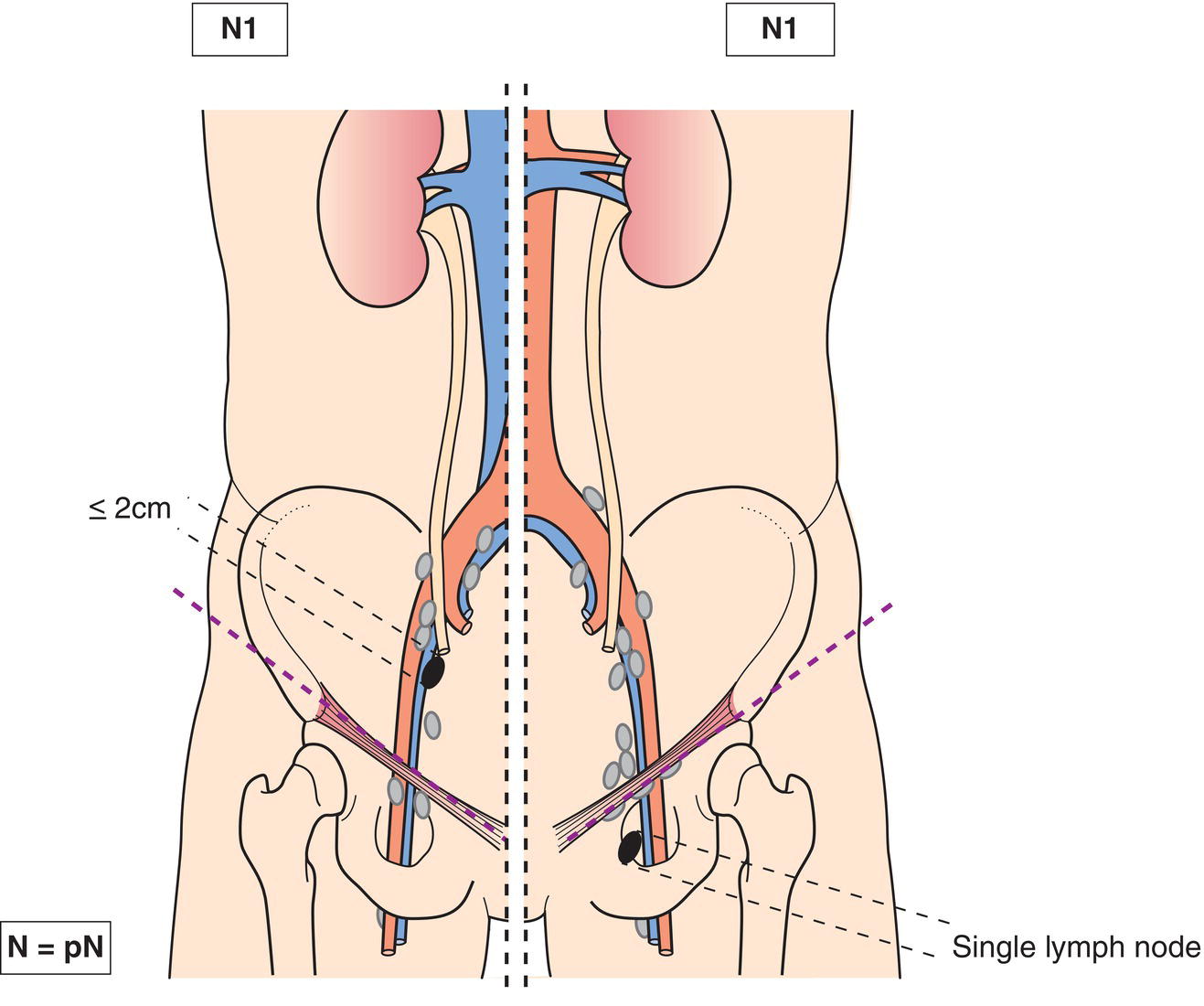
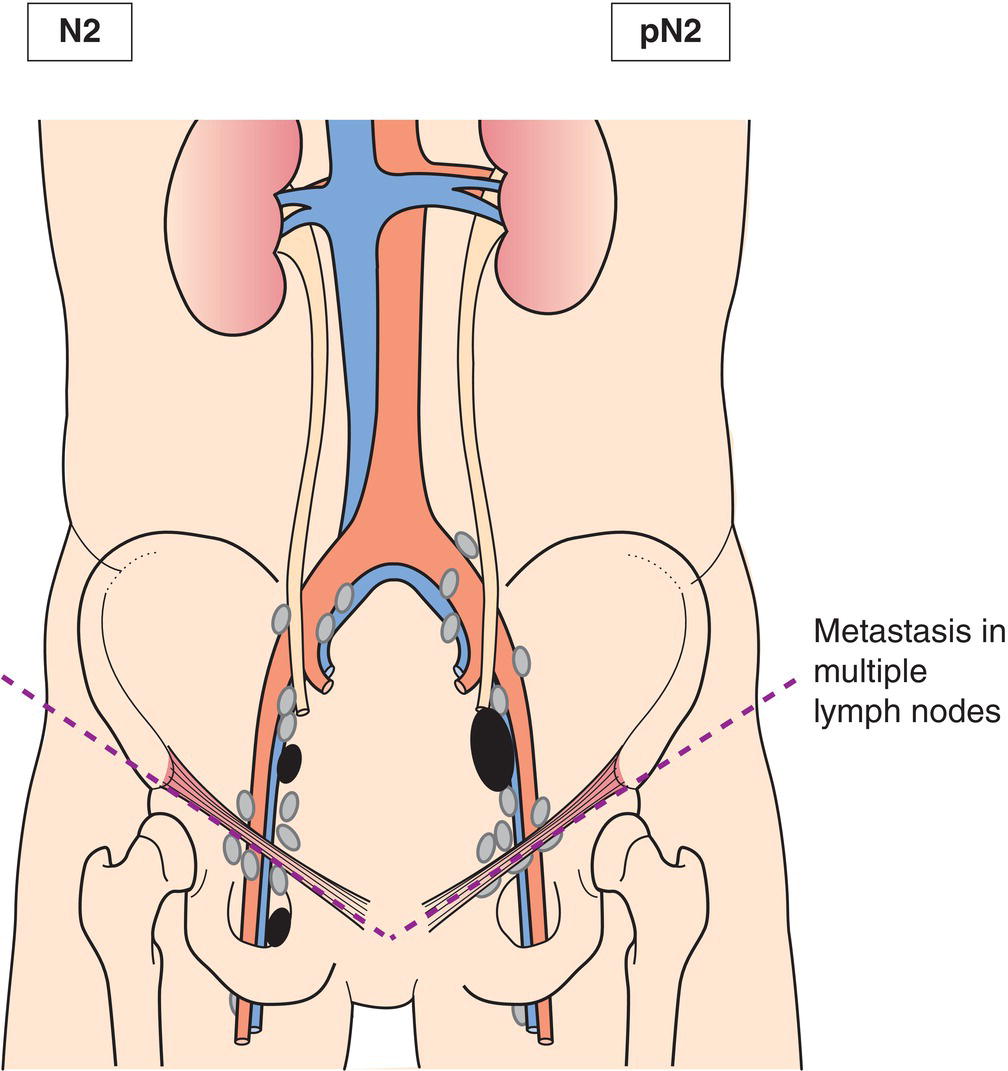
M – Distant Metastasis
M0
No distant metastasis
M1
Distant metastasis
pTNM Pathological Classification
pM1
Distant metastasis microscopically confirmed
Summary
Stay updated, free articles. Join our Telegram channel

Full access? Get Clinical Tree



